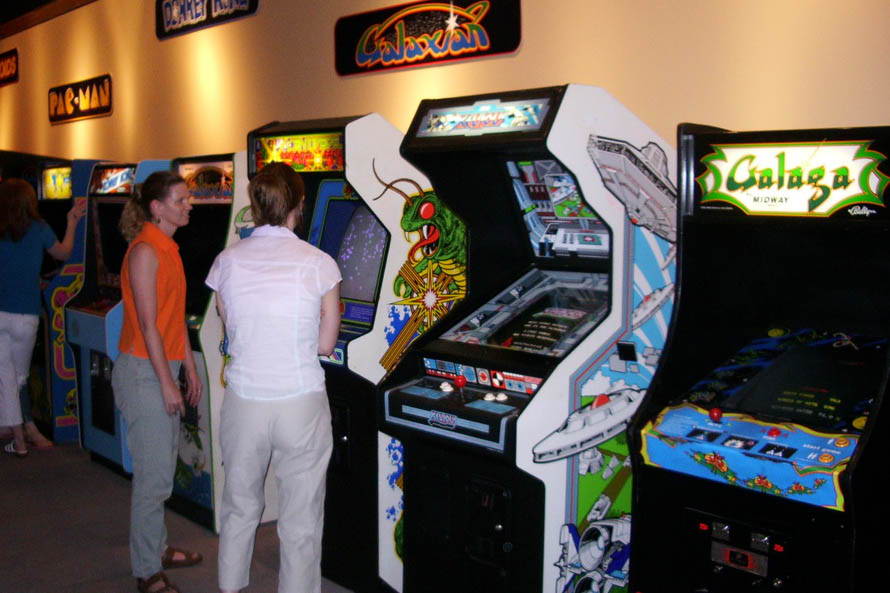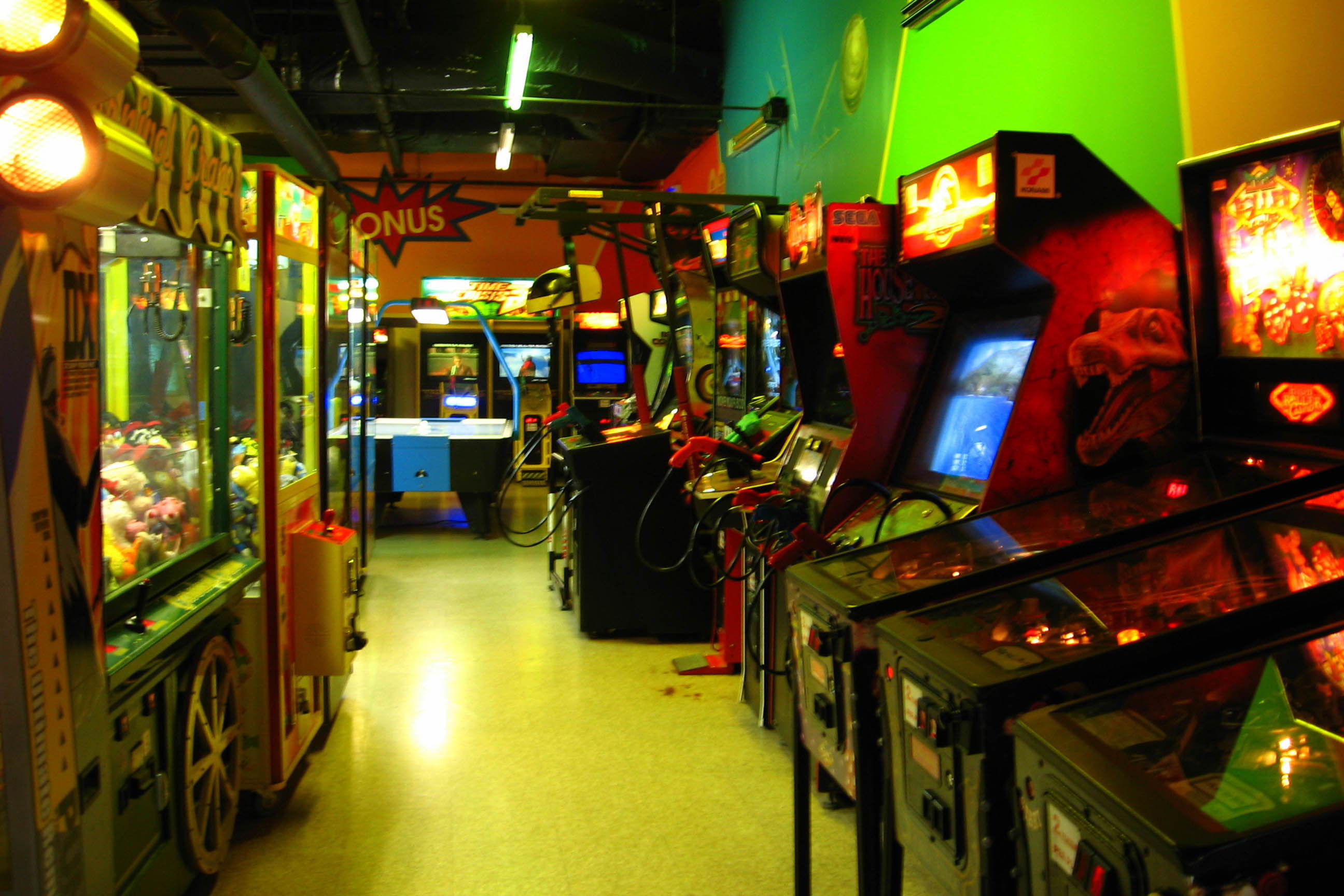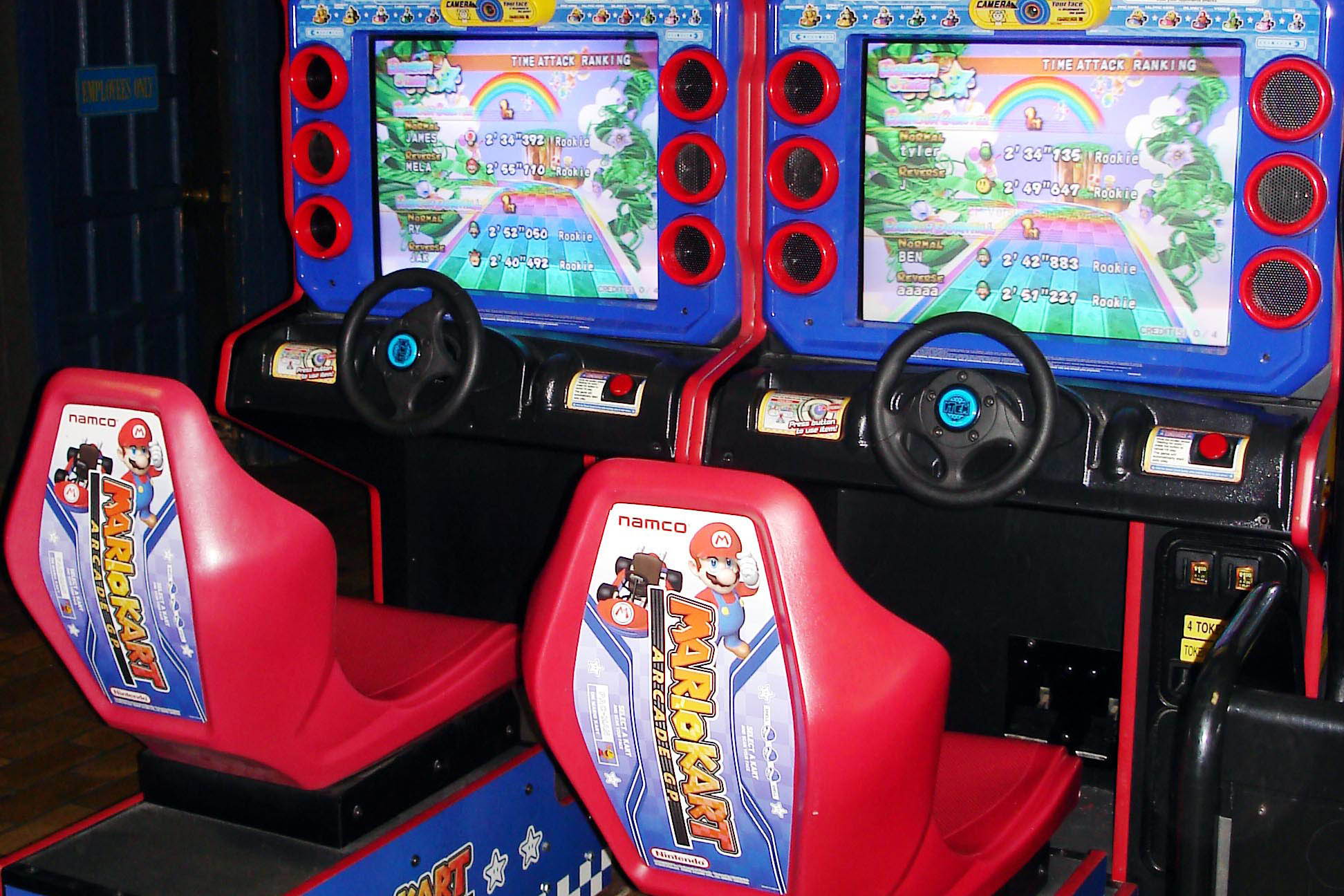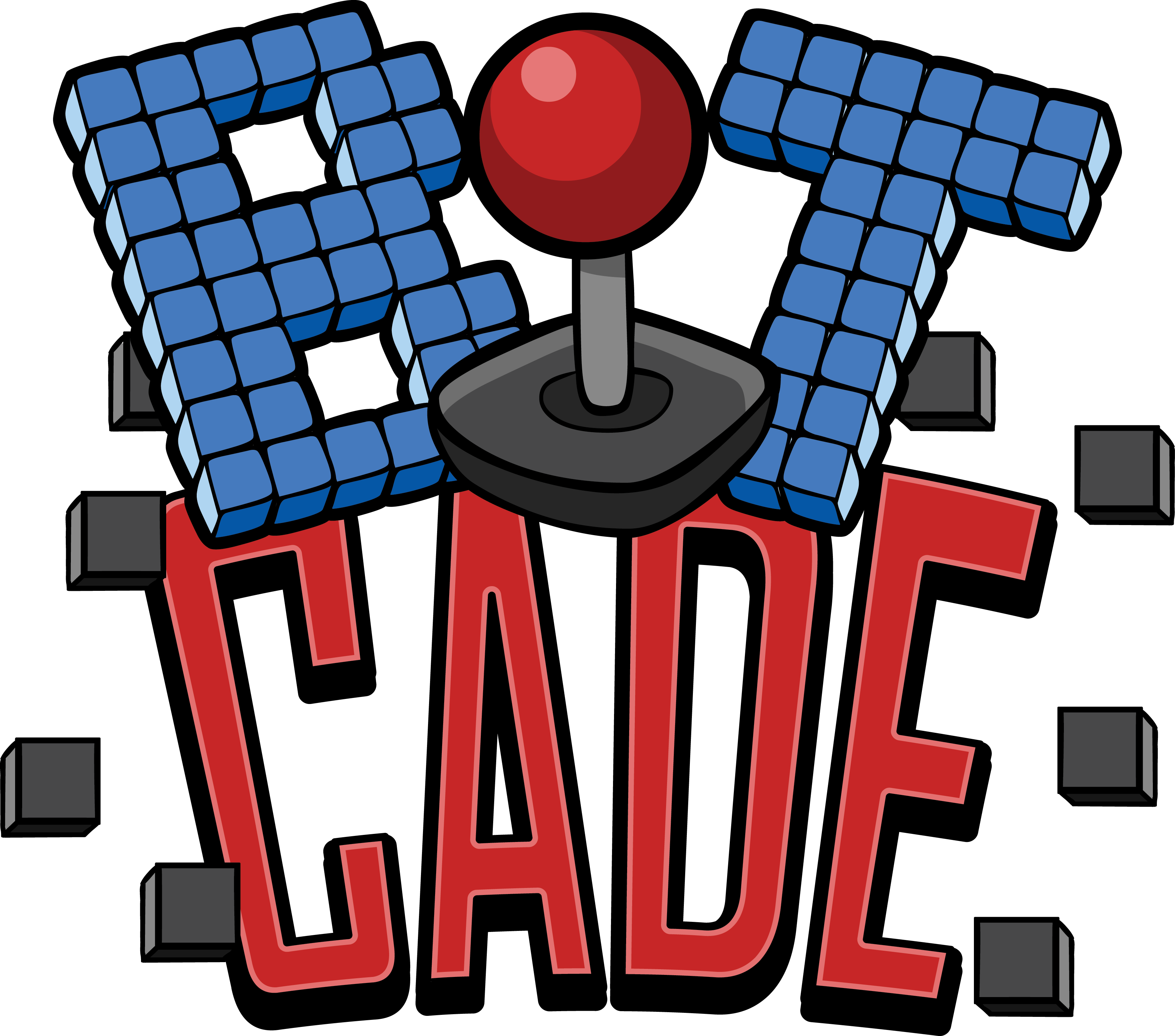The Evolution of Arcade Machines: From Pong to Virtual Reality
Table Of Content
Introduction
From the heart-racing excitement of the golden age of arcade video gaming in the 70s all the way to the almost lifelike virtual reality.
We take a look at the history of arcade machines, starting with the earliest examples from the 1970s and tracing the technological advancements that have led to the immersive virtual reality experiences of today. We'll delve into the classic games that defined each era of arcade history and examine how the design and functionality of the machines themselves have evolved.
Arcade games have come a long way since the days of Pong and Space Invaders. The early arcade machines of the 1970s were simple, one-dimensional affairs, featuring black-and-white graphics and clunky, mechanical controls. But as technology advanced, so did the arcade experience.
The 1980s saw the introduction of colour graphics and more advanced gameplay, with classics like Pac-Man and Donkey Kong leading the way.
The 90s brought the fighting game craze with games like Street Fighter II, Mortal Kombat and Killer Instinct. These games featured more detailed graphics and more complex controls, allowing players to execute a wider range of moves and combos.
With the advent of 3D graphics in the late 1990s and early 2000s, arcade games began to take on a more realistic look and feel. Games like Time Crisis and House of the Dead featured fully rendered environments and realistic character models, immersing players in the action like never before.
Today, the arcade experience has reached new heights with the introduction of virtual reality technology. VR arcade games like Beat Saber, VR Karts and VR Escape Rooms allow players to fully immerse themselves in the game world, using VR headsets and motion controllers to interact with the environment and enemies.
Overall, the evolution of arcade machines has been driven by advancements in technology, which have enabled developers to create more engaging and immersive experiences for players. As technology continues to evolve, we can expect the arcade experience to become even more breathtaking in the future.
Early arcade games
When you think of arcade games, you might picture the dimly lit arcades of the 1990s or the rows of cabinets at your local arcade. But the history of arcade games goes back much further than that. Before there were arcade cabinets, there were amusement halls. These were places where people could get together, spend money on coin-operated machines, and have a good time. The most popular machines in these early amusement halls were pinball machines. These early coin-operated machines paved the way for the arcade cabinets we know and love today.

The arrival of arcade video games 1971−1977
The first arcade cabinet wasn't built until 1971, but the roots of arcade gaming can be traced back to 1962 with the creation of one of the first video games, Spacewar! This simple game featured two spaceships that could fire missiles at each other, and it was a breakthrough in the world of gaming. Spacewar! inspired other developers to create coin-operated versions of the game, and in 1971, Atari released Pong, which brought the idea of arcade gaming to a broader audience. Throughout the 1970s, more game companies began developing arcade games, with racing games being the most popular.

The golden age of arcade games 1978-1983
In 1978, Taito released Space Invaders, which changed the arcade industry forever. Space Invaders was a massive hit and created the shoot-’em-up genre, ushering in what is known as the golden age of arcade games. Throughout the 1980s, arcades were a major fixture in society and Space Invaders was joined by other popular games such as Pac-Man and Donkey Kong. This was the era of the arcade, and it was a time when people of all ages would flock to arcades to play their favourite games. These games also helped to create the shoot-’em-up and platformer genres and were some of the most popular games of the era.

End of the golden age 1984
As the 1980s came to a close, the golden age of arcade games began to fade. The release of home console systems like the Nintendo Entertainment System had a significant impact on the arcade industry, as people could now play similar games in the comfort of their own homes. Additionally, the arcade market had become oversaturated, with too many arcades and too many similar games. This led to a decline in the popularity of arcades and the beginning of a downturn in the industry.

Market recovery 1985−1990
Throughout the latter half of the 1980s, the arcade industry struggled to recover. Many arcades went out of business, and game developers shifted their focus to home console systems. However, there were still a few bright spots in the industry, such as the release of Street Fighter II in 1991. This game revitalized the fighting game genre and brought new life to the arcade scene. Additionally, the development of 3D graphics technology in the early 1990s would also have a significant impact on the future of arcade games.

Resurgence and 3D revolution 1991−1999
The early 1990s saw a resurgence in the popularity of arcade games, thanks in part to the release of Street Fighter II. This game, along with others in the fighting game genre, attracted a dedicated fanbase and helped to bring people back to arcades. Additionally, the development of 3D graphics technology allowed for the creation of more immersive and visually stunning games. Throughout the 1990s, arcade games continued to evolve, with new playstyles, such as light gun games and dancing games, becoming popular.

Evolving Arcade Play styles
As the arcade industry evolved, so did the playstyles of arcade games. In the early days, arcade games were mostly simple and focused on high scores. However, as technology improved, arcade games became more complex and began to incorporate different playstyles. For example, racing games became popular in the 1970s, and light gun games became popular in the 1990s. The introduction of 3D graphics technology also allowed for the creation of more immersive and visually stunning games.

The Arcades of Today
Today, arcades are not as prevalent as they once were, but they still exist and continue to evolve. Many arcades now include a mix of both classic and modern games, and some have even incorporated VR technology. Additionally, arcades have also become popular spots for eSports tournaments and other competitive events. While the arcade industry may not be as big as it once was, it still holds a special place in the hearts of many gamers, and it continues to be a source of nostalgia and fun for people of all ages.

Popular Arcade Gaming Machines in the Past and Genres
Pinball Machine
Pinball machines were one of the most popular coin-operated machines in the early days of arcade gaming. These machines were simple, but they were a lot of fun to play. They featured a metal ball that players could launch using a spring-loaded plunger. The goal of the game was to use flippers to keep the ball in play and score as many points as possible. Pinball machines were a staple in early amusement halls, and they continue to be popular in arcades today.
Tabletop Football Machine
Another popular coin-operated machine in early arcade gaming was the tabletop football machine. These machines were miniature versions of the game of American football and featured a small field, players, and a ball. Players would use knobs or levers to control the movement of their team and try to score points. Tabletop football machines were a popular pastime in the early days of arcade gaming and can still be found in some arcades today.
Video Gaming Arcade Machines
In the 1970s, video gaming arcade machines began to appear. These machines featured simple, early video games that were played on a screen. These early games were simple by today's standards, but they were a lot of fun to play. Some popular early video gaming arcade machines include
Computer Space
Computer Space was one of the first commercial arcade games, released in 1971 by Syzygy Engineering. The game was a coin-operated version of the 1962 game Spacewar! and featured two spaceships that could fire missiles at each other. Computer Space was not as successful as Atari's Pong, which was released the following year, but it was an important early arcade game.
Light Gun Shooter
Light gun games, also known as shooting games, became popular in the 1990s. These games featured a gun-shaped controller that players used to shoot at targets on the screen. Some popular light gun games from the 1990s include Time Crisis and House of the Dead. Light gun games are still popular in arcades today and have evolved to incorporate newer technology like VR.
Action Games
Action games became popular in the arcade industry throughout the golden age of arcade games. These games typically featured fast-paced, action-packed gameplay and required quick reflexes. Some popular action games from this era include Gauntlet and Double Dragon. These games continue to be popular in arcades today and have evolved to incorporate newer technology like VR.
Racing Games
Racing games were also popular in the arcade industry during the golden age of arcade games. These games typically featured fast-paced, action-packed gameplay and required quick reflexes. Some popular racing games from this era include Pole Position and Out Run. These games continue to be popular in arcades today and have evolved to incorporate newer technology like VR.
Virtual Racing
Virtual racing has become popular in arcades in recent years. These games feature realistic racing simulations and allow players to feel like they are actually driving a race car. Some popular virtual racing games include Mario Kart Arcade GP and F-Zero AX. These games use advanced technology like motion simulation and VR to give players an immersive racing experience.
In conclusion, arcade gaming has come a long way from its humble beginnings. From pinball machines to virtual racing games, arcade gaming has always been a source of entertainment and nostalgia for many people. The arcade industry may not be as big as it once was, but it continues to evolve and continues to be a source of fun for people of all ages.
It's worth noting that the arcade industry has seen a resurgence in recent years, thanks in part to the popularity of retro gaming and nostalgia for the golden age of arcade games. Many arcades now include a mix of classic and modern games, and some have even incorporated VR technology to give players an immersive experience. Additionally, arcades have also become popular spots for eSports tournaments and other competitive events.
Popular arcade games, and their success:
Galaxy Game (1971) - Galaxy Game was one of the first arcade games, created by Bill Pitts and Hugh Tuck in 1971 as a coin-operated version of the 1962 game Spacewar!. It was not as successful as other early arcade games, but it was an important early game in the industry.
Pong (1972) - Pong was released by Atari in 1972, and it was one of the first arcade games to be a commercial success. It was a simple game featuring two paddles and a ball, and the goal was to hit the ball back and forth, trying to score points on your opponent. It helped to bring arcade gaming to a broader audience, and it is considered one of the most important games in the history of video games. It generated $35 million in revenue.
Space Invaders (1978) - Space Invaders was a massive hit released by Taito in 1978. It created the shoot-’em-up genre and ushered in the golden age of arcade games. The game was a huge success, with players all over the world trying to beat their high scores. It generated $2.6 billion in revenue.
Pac-Man (1980) - Pac-Man was released by Namco in 1980, and it quickly became one of the most popular arcade games of all time. The game featured a yellow character named Pac-Man who had to navigate a maze while avoiding ghosts. The game was a massive hit and generated $3.5 billion in revenue.
Dragon’s Lair (1983) - Dragon’s Lair was a laserdisc video game released by Cinematronics in 1983. The game featured animation and full-motion video, and players had to make quick decisions to guide the character through the game. It was a popular game in arcades, but it didn't generate as much revenue as other games of the era.
Out Run (1986) - Out Run was a racing game released by Sega in 1986. The game featured a Ferrari and players had to race against the clock and other cars to reach the finish line. It was a huge hit and one of the most popular arcade games of the era. It generated $100 million in revenue.
Teenage Mutant Ninja Turtles (1989) - Teenage Mutant Ninja Turtles was a beat 'em up game released by Konami in 1989. The game was based on the popular animated series of the same name and featured four turtles as the main characters. It was a huge hit and generated $1.1 billion in revenue.
Street Fighter II (1991) - Street Fighter II was a fighting game released by Capcom in 1991. The game was a huge hit and helped to revitalize the arcade scene in the 1990s. It generated $1.5 billion in revenue.
Mortal Kombat (1992) - Mortal Kombat was a fighting game released by Midway Games in 1992. The game featured violent and graphic fatalities and was controversial, but it was a massive hit. It generated $1.2 billion in revenue.
Dance Dance Revolution (1998) - Dance Dance Revolution was a rhythm game released by Konami in 1998. The game featured a dance pad controller and players had to step on the correct arrows in time with the music. It was a popular game in arcades and generated $1 billion in revenue.
Present time Virtual reality gaming
Virtual reality (VR) games have come a long way since they first emerged in the 1990s. Back then, VR technology was clunky and expensive, and the games available were limited in scope and graphics. Fast forward to today, and VR technology has advanced significantly, making it more accessible and affordable for consumers. The result is a whole new world of immersive gaming experiences that players can enjoy.
One of the earliest VR games was the 1992 game Dactyl Nightmare. This game was created by Jaron Lanier, the founder of VR company VPL Research, and it was the first VR game to use a head-mounted display (HMD). Players controlled a pterodactyl flying through a canyon, shooting at targets and dodging obstacles. Though the game was primitive by today's standards, it was a glimpse of what was to come.
Another early VR game was the 1995 game Sega VR-1, which was a motion simulator that allowed players to experience a virtual rollercoaster ride. The game was ahead of its time and was not a commercial success, but it was a proof of concept for future VR games.
In the early 2010s, VR technology began to advance once again, with the release of the Oculus Rift. The Oculus Rift was a HMD developed by Oculus VR, which was later acquired by Facebook. The device featured a head-tracking system and a high-resolution display, allowing players to experience a more immersive gaming experience.
The Oculus Rift was followed by other VR devices such as the HTC Vive and PlayStation VR. These devices were more advanced than the Oculus Rift and allowed for even more immersive gaming experiences. They also opened the door for a new generation of VR games that could take advantage of the technology.
One of the most popular VR games to date is Beat Saber, a rhythm game where players use lightsabers to slash blocks in time with the music. The game was released in 2018 and quickly became a hit among VR gamers, selling over 4 million copies by 2020.
Another popular VR game is Half-Life: Alyx, a first-person shooter game developed and published by Valve Corporation. The game was released in 2020 and was praised for its immersive gameplay and storytelling. It also helped to push VR technology further into the mainstream.
In recent years, VR technology has also been used in other industries, such as education and healthcare. Virtual reality has been used to simulate surgeries and train surgeons, as well as to help people with phobias and PTSD.
In conclusion, virtual reality games have come a long way since they first emerged in the 1990s. Today, VR technology is more advanced and affordable, and the games available are more immersive than ever before. With the release of new VR devices and games, we can expect even more exciting developments in the future of virtual reality gaming.
Beat Saber - Beat Saber is a rhythm game developed and published by Beat Games. Players use lightsabers to slash blocks in time with the music, and it's one of the most popular VR games to date. It was released in 2018 and quickly became a hit among VR gamers, selling over 4 million copies by 2020. Over $200 million in revenue.
Superhot VR - Superhot VR is a first-person shooter game developed and published by Superhot Team. Players control time and use their bodies to move and aim in the game. It was released in 2016 and received positive reviews for its innovative gameplay and immersive experience. Over $40 million in revenue.
Job Simulator - Job Simulator is a simulation game developed and published by Owlchemy Labs. Players take on the role of a robot in a futuristic world where robots have replaced human jobs. The game was released in 2016 and received positive reviews for its humorous and engaging gameplay. Over $30 million in revenue.
Moss - Moss is an action-adventure game developed and published by Polyarc. Players control a mouse named Quill on a journey through a magical forest. The game was released in 2018 and received positive reviews for its beautiful graphics and immersive gameplay. ver $25 million in revenue.
Arizona Sunshine - Arizona Sunshine is a first-person shooter game developed and published by Vertigo Games. Players must survive in a post-apocalyptic world overrun by zombies. The game was released in 2016 and received positive reviews for its intense and immersive gameplay. Over $20 million in revenue. Over $20 million in revenue.
Keep Talking and Nobody Explodes - Keep Talking and Nobody Explodes is a puzzle game developed and published by Steel Crate Games. Players must defuse a ticking bomb by communicating with a partner who has the manual. The game was released in 2015 and received positive reviews for its unique and challenging gameplay. Over $15 million in revenue
Robo Recall - Robo Recall is a first-person shooter game developed and published by Epic Games. Players take on the role of a robot who must fight against rogue robots. The game was released in 2017 and received positive reviews for its fast-paced and intense gameplay. Over $12 million in revenue.
The Lab - The Lab is a collection of mini-games developed and published by Valve Corporation. Players can explore a virtual laboratory and participate in various experiments and activities. The game was released in 2016 and received positive reviews for its fun and engaging gameplay. Over $10 million in revenue.
Fallout 4 VR - Fallout 4 VR is a first-person shooter game developed and published by Bethesda Game Studios. Players take on the role of a survivor in a post-apocalyptic world and must fight against mutants and other enemies. The game was released in 2016 and received positive reviews for its immersive gameplay and detailed world. Over $8 million in revenue.
L.A Noire: The VR Case Files - L.A Noire: The VR Case Files is a detective game developed by Team Bondi and published by Rockstar Games. Players take on the role of a detective in 1940s Los Angeles and must solve crimes and interact with the city's inhabitants. The game was released in 2017 and received positive reviews for its immersive gameplay and accurate representation of the era. The VR Case Files - Over $7 million in revenue.
